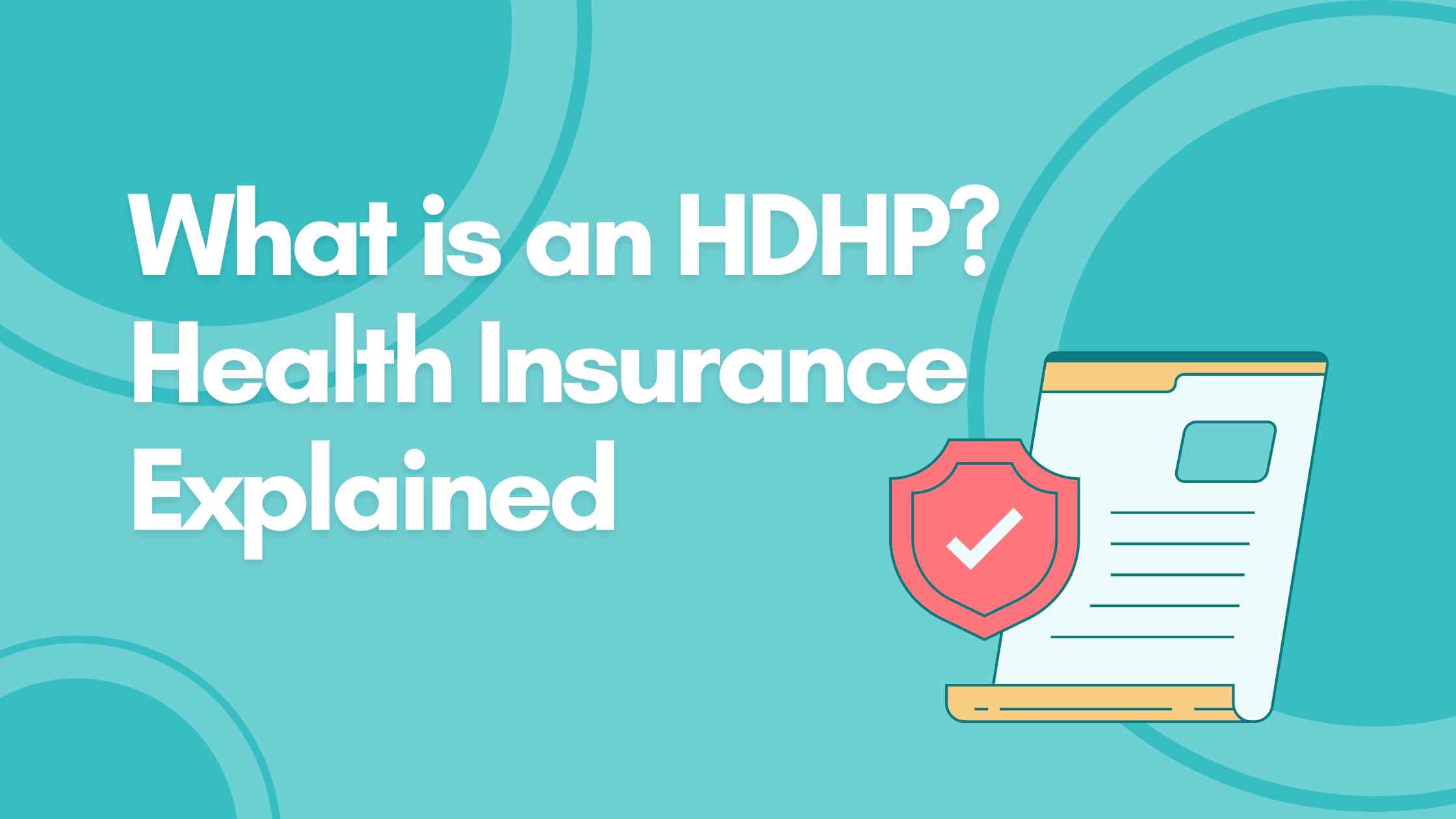The world of health insurance comes with plenty of long, wordy terms — it also comes with plenty of initialisms, acronyms, and other confusing strings of letters that stand in for complex, nuanced concepts. “HDHP” is one of them. What is an HDHP? How does an HDHP impact your ability to access and afford healthcare? And should you get an HDHP?
We’ll take you through the HDHP basics in this article so you can make an informed decision about whether you should enroll in an HDHP or find another type of insurance plan that better suits your situation.

What does HDHP mean?
First and foremost, let’s define the term HDHP. HDHP stands for high deductible health plan. It is a type of health insurance plan that is designed so you have a higher deductible and a lower premium.
To pause and unpack that information, a deductible is the money that you’ll pay out of your own pocket before your insurance benefits begin to provide coverage. For example, if your deductible is $500, then you won’t be able to use your insurance benefits to lower your costs for healthcare services until you’ve spent $500 out of pocket on eligible medical costs. After you’ve paid for $500 worth of healthcare services, then your insurance plan will kick in with its coverage. At this point, after you’ve met your deductible, your copays and coinsurance rates apply.
Having a high deductible means that you’ll pay more money upfront for healthcare costs, including the cost of therapy sessions. However, to offset these costs, your premium — that is, how much you pay to be enrolled in your insurance plan each year — will be lower.
Looking for a refresher on other health insurance terms? Read our comprehensive insurance guide.
How do I know if I have an HDHP?
To find out if you have an HDHP, read through your Summary of Benefits document, which spells out the fine details of your insurance plan. You can find this document through your online account or through your employer, if you receive your insurance through work. Within this document, look for your deductible amount. If it’s over $1,500 for individuals or over $3,000 for families, then you have an HDHP as defined by the IRS. The government defines HDHP as being at or above these thresholds.
What are the benefits of an HDHP?
There are many benefits of being enrolled in an HDHP, and they are a popular type of insurance plan because of these benefits.
Here are the major benefits of HDHPs:
- You have a lower premium, which means more money in your monthly budget. Without needing to pay a large portion of your paycheck each month to maintain your insurance coverage, you’ll be left with more cash to spend in other ways, such as adding it to your savings account.
- You might get discounts when seeing an in-network provider. For some HDHPs, you will pay less out-of-pocket when you see in-network providers. This is because insurance companies want to incentivize you to access healthcare, particularly from their network of providers, so they lower their costs.
- You have access to an HSA. When you are enrolled in an HDHP, you can open a Health Savings Account (HSA). The money that you put into your HSA is not taxed, which means you can keep more of your own money without giving up a percentage to the government. This money must be spent on health-related purchases, whether that’s to pay for a gym membership, certain medications, or therapy sessions.
For these reasons, HDHPs are best suited to younger and healthier individuals who don’t anticipate having many medical costs throughout the year. They can be effective money-savers while still providing you with the health insurance you need to stay healthy.
What are the downsides of an HDHP?
HDHPs aren’t for everyone. There are also some downsides of being enrolled in an HDHP, and sometimes these downsides are enough to persuade someone to find another type of insurance plan.
Some downsides of HDHPs include:
- It might affect your mindset and you might avoid the doctor. If you know that you need to pay a certain amount before accessing your insurance benefits, you might decide to put off seeing the doctor, which can have major health consequences down the road.
- If you have a chronic illness, you might need to pay a lot out-of-pocket. For those who have frequent healthcare costs — whether for hospitalizations, medications, or medical equipment — HDHPs can become quite expensive, as you’ll need to pay a large amount of money before you start to receive coverage.
Other people prefer more traditional types of insurance plans than HDHPs, as they better suit their needs and their budgets.
Should I get an HDHP for my insurance?
Whether or not you get an HDHP as your insurance plan depends on your overall health and your budget. They are friendly and advantageous insurance plans for many people, particularly those who don’t face challenges with their physical or mental health. Others opt out of HDHPs because they find them costly and inconvenient.
To better understand if an HDHP is right for you, consider the next 12 months’ worth of medical costs, including therapy costs. If you find that these costs would become more cost-effective if you had a lower deductible, you might consider another type of insurance plan. If your costs far exceed the HDHP deductible, then you might benefit from enrolling in this type of plan.